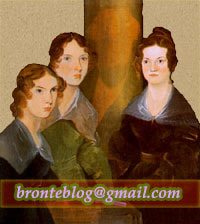Whilst the film release date was my kick up the backside to finally get through part one, Wuthering Heights has sat on my bookshelf since I was seventeen, because I could never get through the jungle of words I’d never heard in my life in the first chapters. That, and there was no romance at all, fully convincing me of the stereotype that Victorian books really are just people going to each other’s houses. However, once I got through a very lengthy set-up, I found one of my new favourite books.
The book contains romance, but calling it a romance book isn’t an accurate description (at least not a healthy one). Obsession, motivated by genuine romantic feelings, drives the plot, but what happens is not romantic. And this isn’t in an ultra-woke, feminists ruin everything way, because what some people do in this book is genuine freak behaviour, both today and in the Victorian era. This pair are critically judged by their peers. But regardless, it’s incredibly intense, and isn’t that what we all want anyway? But I fear that the adaptation, due out this Valentine’s Day, hasn’t interpreted this intensity correctly.
I picked up Wuthering Heights expecting a slow-burning if not slightly tragic love story about two people in the Victorian era who have to hide their love, a la Romeo and Juliet for goths. It was not that.
It was still absolutely fantastic, but if Emerald Fennel plans on keeping the film true to the book, this is maybe not the Valentine’s date for relatively new couples, to the point I think it’s a bit twisted that the release date is the 14th.
Saying that, it’s a twisted book and could make for a sick film, so if this is revelling in itself? I think it works. But please, please, please don’t go in expecting a heartwarming story. This was Normal People for Victorian freaks.
Not to rain on everyone’s parade, but Emily Brontë would not want her gothic novel’s adaptation to be released on Valentine’s, starring two white, very beautiful actors, and advertised by a trailer focusing on how hot they are for each other.
I can’t write off that Catherine was thinking the way Margot Robbie portrays her to be thinking at the start of the trailer, but Brontë never actually comes out and says that. If anything, Catherine can seem quite aloof from time to time, but I digress.
We’re doing ourselves an injustice if we’re only focused on their obsession in and of itself. The plot and drama of Wuthering Heights come in the form of the consequences of this obsession, so not only does a hyperfixation on romance significantly dilute the story, but it would rob the audience entirely of moments that left me audibly gasping and throwing my copy across the room. Cathy and Heathcliff do not exist in a vacuum, yet they seem to think that they do. The trailer seems to show what they think is happening in their minds, but that doesn’t make it true.
Speaking of inaccuracy, I need to beat a dead horse here in terms of online discourse about the film’s casting. Heathcliff is not a white man. This isn’t a coincidence; it’s central to his character.
Heathcliff is an orphan, taken in by a wealthier man, and described as a “gipsy”, with one character speculating if his father “was Emperor of China, and your mother an Indian queen”. We don’t know much, but we know that he’s destitute and at the mercy of the wealthy folk around him. Not only is there a class power dynamic, but a racial one, as Heathcliff’s “inferiority” to his environment is visible. Characters are racist towards him, he’s called a “ruffian”, and Heathcliff’s “moodiness” or whatever you want to call it, comes from this.
He’s not so shallow as not to have a source for his chronic anger. Without the class barrier, which comes from the racial power dynamic, Heathcliff is reduced to a Wattpad boyfriend stereotype. Hence, with no disrespect to Jacob Elordi, this role was not exactly made for him. (Jess Urquhart)






%20(1).jpg)
.png)







